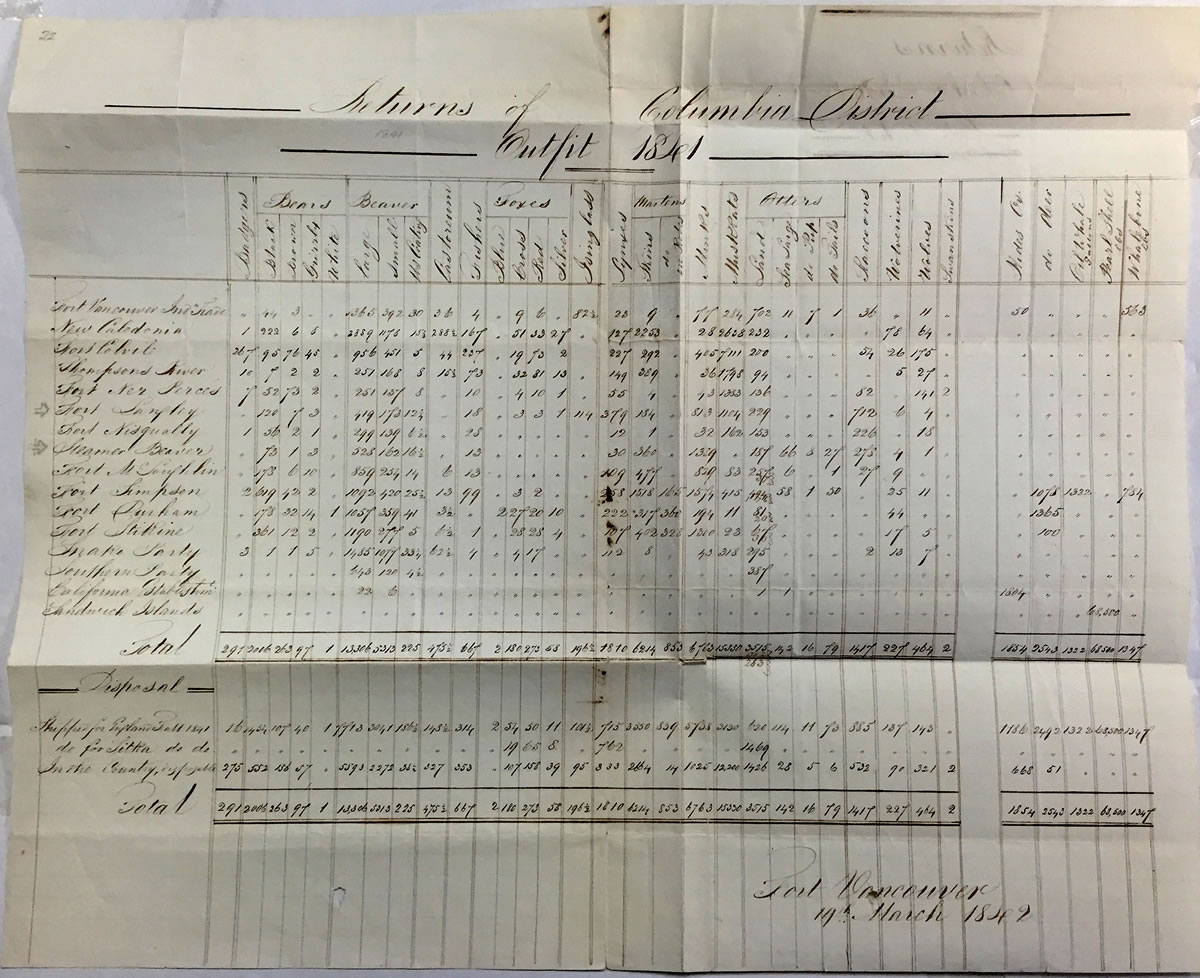The Hudson’s Bay Company made a lot of money in the vast operation that was headquartered at Fort Vancouver.
That operation is still generating money, but it wasn’t furs and beaver pelts that turned a profit a few days ago. A one-page list of all the skins and pelts harvested in 1841 in the Columbia District sold for $6,000 in a weekend auction.
The winning bid (which was $7,700 in Canadian currency) came from a private Canadian collector who is remaining anonymous, said Brian Grant Duff, owner of All Nations Stamp and Coin in Vancouver, B.C.
Grant Duff auctioned the document on behalf of the previous owner, another anonymous collector.
As a window into the Hudson’s Bay Company’s Northwest fur empire, “This may be one of the earliest documents in private hands,” Grant Duff said after Saturday’s auction. “There was enormous interest. One bidder called me at 3 a.m.”
The document, which measures 15 inches by 12 inches, was written at Fort Vancouver and is dated 19 March 1842.
“It’s a fascinating document,” said Greg Shine, chief ranger at Fort Vancouver National Historic Site. “It’s great to see them when they come up.”
Shine, also a National Park Service historian, explained the document’s formal title: “Returns of the Columbia District Outfit 1841.”
“An ‘outfit’ is a fiscal year, June 1 through May 31,” Shine said.
“Columbia District” is defined by 16 fur-trading sites on the left side of the document. The list includes a series of forts that extend from what now is Alaska down to California.
John McLoughlin oversaw the region from Fort Vancouver in those days, and “his daughter and son-in-law operated the California post in Yerba Buena,” Shine said.
The scope of the Columbia District is illustrated by a listing for the Sandwich Islands, which we now call Hawaii. There also is a listing for the Beaver, a steamship that arrived at Fort Vancouver in April 1836 and served trading posts from the Columbia River to Alaska.
Across the top of the document are column headings for about 30 commodities, from badger skins to whale oil.
Fort Vancouver National Historic Site was not among the bidders for the document, by the way.
“To my knowledge, we have never acquired something for our museum collection via auction,” said Theresa Langford, Fort Vancouver’s museum curator.
“We are extremely selective on what we acquire for the collection through purchase, because our dollars are limited and we prioritize caring appropriately for the collection items we already have,” she said in an email. Federal procurement guidelines make it difficult to purchase something in an auction, she said.
“We are always interested in receiving these types of items as donations, however, provided they have clear provenance and title,” she added.
And, while it’s always nice to have an original record, “I believe this one would provide information we already have on microfilm from the Hudson’s Bay Company archives,” Langford said.
Shine agreed that there are plenty of sources for the fur-trade information.
“There were multiple copies of these key documents made by clerks, because of their nature,” Shine said.
Since it was clearly folded, and not torn out of a ledger, Langford and Shine think that it was probably part of an annual accounting. It was either sent by ship around the tip of South America or via the York Factory Express — an overland route to a trading post on Hudson’s Bay.




